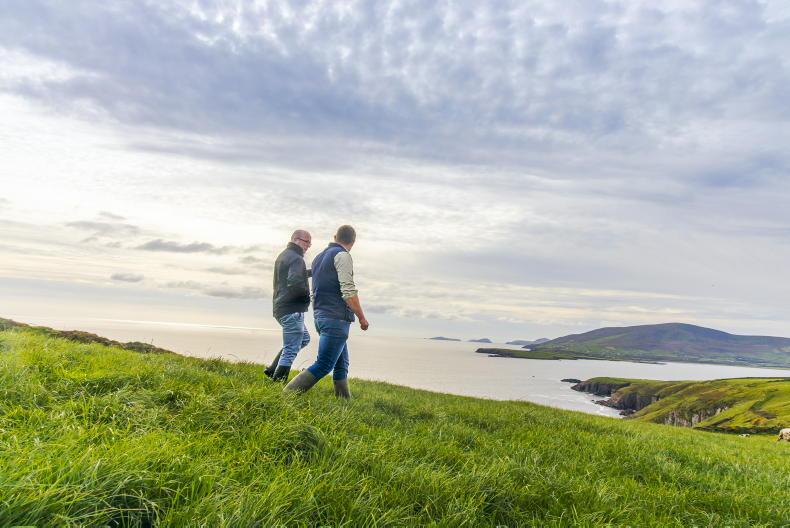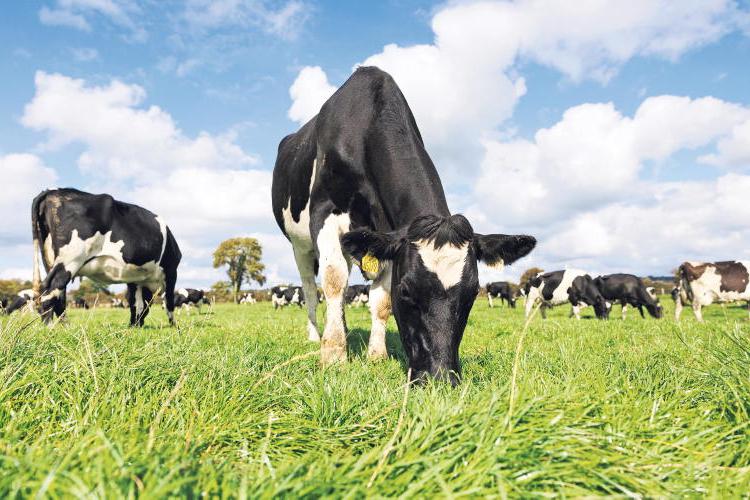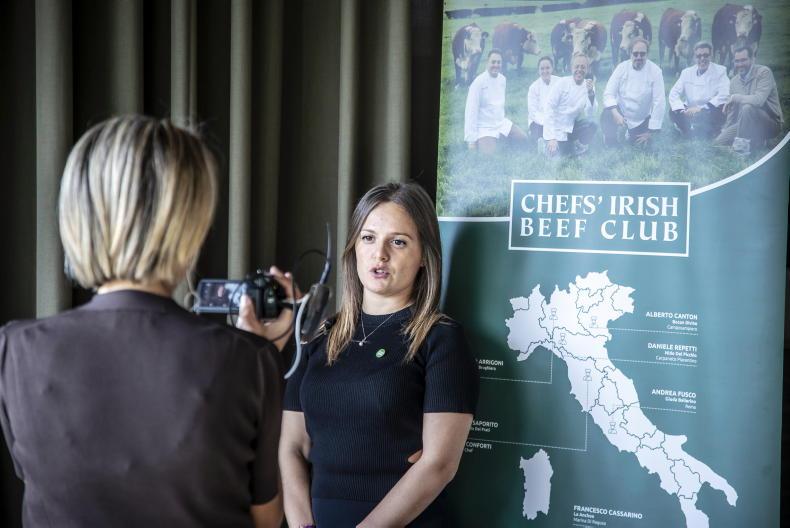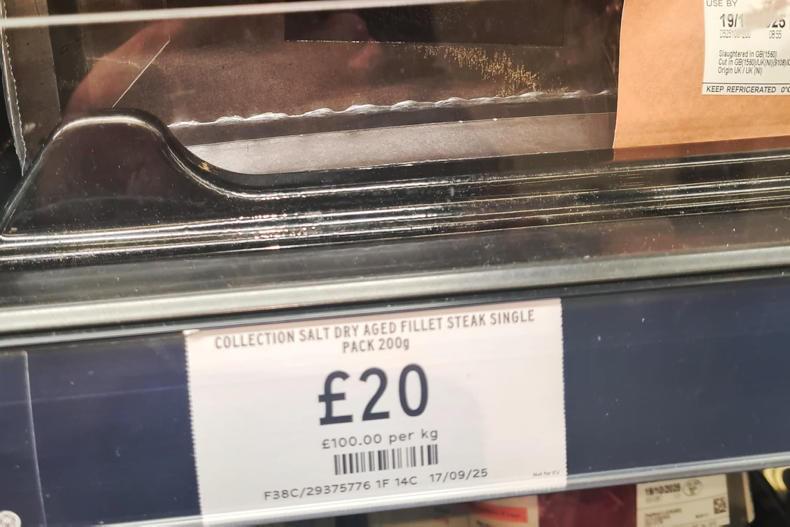Twenty years after the idea was originally mooted, agreement has been finally reached to go forward with a PGI for grass-fed beef on the island of Ireland.
In recent days, ministers in both jurisdictions hammered out the final details that enable the Irish Government go forward to the EU with a revised application that will include Northern Irish beef, as well as beef from the Republic of Ireland.
The original application applied to beef from the Republic of Ireland only, and for a time it looked like this would scupper the application as the UK government lodged an objection procedure on behalf of the Northern Ireland administration under the consultation process.
Over a decade ago, parallel applications from both the North and the Republic of Ireland were dropped because consensus couldn’t be achieved.
Fortunately, this objection wasn’t as negative as the language sounds and was acknowledged as such by the EU in their advice to the Irish Government on taking the application forward with Northern Ireland on board. This didn’t prove to be completely straightforward as there was no grass-fed standard in place in the North and agreeing a specification on this proved to be a sticking point, in particular the requirement for cattle being grazed for 220 days at grass.
When this was settled, the final pieces of the jigsaw fell into place and the Irish Government was in a position to meet the 13 July target for resubmission.
Despite the bad start, Bord Bia and LMC, the levy organisation in Northern Ireland, collaborated well to get the standard in place for both jurisdictions and Ministers McConalogue and Poots provided the political leadership to make a cross-border initiative work that will serve farmers across the island of Ireland.
Work begins now
Unfortunately, there is no cause for major celebration yet. This agreement enables the application be resubmitted opening it to the consultation process again. However, given that the direction from the EU has been followed, it is unlikely that there will be further obstacles and it could be in place around the end of the year or early in 2023.
At that point, the journey can begin to try and build value into the brand.
This challenge should not be underestimated and there is no guarantee of success but the effort has to be made. It has been achieved up to a point a long time ago.
In the 1980s and early 1990s, Northern Ireland had a very successful Greenfields Irish beef brand in partnership with the Albert Heijn supermarket group in the Netherlands. Unfortunately, with the BSE ban on British beef, the North had the brand but no beef.
Having a PGI brand will allow levy funding be used to promote the brand
A collaboration was entered into for Republic of Ireland beef to be used to service the brand with promotion on an ad-hoc basis between Bord Bia and LMC but this had issues with EU State aid rules.
Having a PGI brand will allow levy funding be used to promote the brand and the first step is for both agriculture departments and their agencies to develop a marketing strategy and appropriate budget to give the brand the best possible chance of success.
There are no guarantees with the venture but without a substantial well-funded promotion campaign, any new brand has little chance of success.
Target markets
Britain is the main market outlet for beef from both jurisdictions and the high-volume customers are the supermarkets for a range of cuts, and burger chains and other manufacturing outlets for mince and burger beef.
These outlets in the main are own-label and in the case of UK supermarkets use Red Tractor branding to denote British beef. Burger chains use British and Irish so that leaves the hospitality and restaurant sector as a possibility.

EU designations that recognise regional food and drinks or products with special characteristics.
Further afield, French supermarkets are 100% French beef but Irish beef has had some success in Germany, Netherlands and Scandinavia. Perhaps this market can be cultivated. After all, Kerrygold butter has been an outstanding success in Germany as a premium product.
It has been a long road to get to the point where an agreed PGI application can be made. This means the island of Ireland can begin building a brand for grass-fed beef.
That will be a slow process without any guarantee of success but it is better to try than wonder what might have happened. It will require investment and patience and it could well be years before any benefit accrues.
Twenty years after the idea was originally mooted, agreement has been finally reached to go forward with a PGI for grass-fed beef on the island of Ireland.
In recent days, ministers in both jurisdictions hammered out the final details that enable the Irish Government go forward to the EU with a revised application that will include Northern Irish beef, as well as beef from the Republic of Ireland.
The original application applied to beef from the Republic of Ireland only, and for a time it looked like this would scupper the application as the UK government lodged an objection procedure on behalf of the Northern Ireland administration under the consultation process.
Over a decade ago, parallel applications from both the North and the Republic of Ireland were dropped because consensus couldn’t be achieved.
Fortunately, this objection wasn’t as negative as the language sounds and was acknowledged as such by the EU in their advice to the Irish Government on taking the application forward with Northern Ireland on board. This didn’t prove to be completely straightforward as there was no grass-fed standard in place in the North and agreeing a specification on this proved to be a sticking point, in particular the requirement for cattle being grazed for 220 days at grass.
When this was settled, the final pieces of the jigsaw fell into place and the Irish Government was in a position to meet the 13 July target for resubmission.
Despite the bad start, Bord Bia and LMC, the levy organisation in Northern Ireland, collaborated well to get the standard in place for both jurisdictions and Ministers McConalogue and Poots provided the political leadership to make a cross-border initiative work that will serve farmers across the island of Ireland.
Work begins now
Unfortunately, there is no cause for major celebration yet. This agreement enables the application be resubmitted opening it to the consultation process again. However, given that the direction from the EU has been followed, it is unlikely that there will be further obstacles and it could be in place around the end of the year or early in 2023.
At that point, the journey can begin to try and build value into the brand.
This challenge should not be underestimated and there is no guarantee of success but the effort has to be made. It has been achieved up to a point a long time ago.
In the 1980s and early 1990s, Northern Ireland had a very successful Greenfields Irish beef brand in partnership with the Albert Heijn supermarket group in the Netherlands. Unfortunately, with the BSE ban on British beef, the North had the brand but no beef.
Having a PGI brand will allow levy funding be used to promote the brand
A collaboration was entered into for Republic of Ireland beef to be used to service the brand with promotion on an ad-hoc basis between Bord Bia and LMC but this had issues with EU State aid rules.
Having a PGI brand will allow levy funding be used to promote the brand and the first step is for both agriculture departments and their agencies to develop a marketing strategy and appropriate budget to give the brand the best possible chance of success.
There are no guarantees with the venture but without a substantial well-funded promotion campaign, any new brand has little chance of success.
Target markets
Britain is the main market outlet for beef from both jurisdictions and the high-volume customers are the supermarkets for a range of cuts, and burger chains and other manufacturing outlets for mince and burger beef.
These outlets in the main are own-label and in the case of UK supermarkets use Red Tractor branding to denote British beef. Burger chains use British and Irish so that leaves the hospitality and restaurant sector as a possibility.

EU designations that recognise regional food and drinks or products with special characteristics.
Further afield, French supermarkets are 100% French beef but Irish beef has had some success in Germany, Netherlands and Scandinavia. Perhaps this market can be cultivated. After all, Kerrygold butter has been an outstanding success in Germany as a premium product.
It has been a long road to get to the point where an agreed PGI application can be made. This means the island of Ireland can begin building a brand for grass-fed beef.
That will be a slow process without any guarantee of success but it is better to try than wonder what might have happened. It will require investment and patience and it could well be years before any benefit accrues.










SHARING OPTIONS